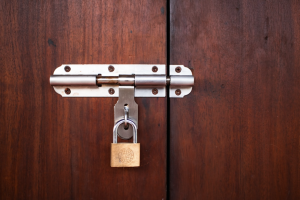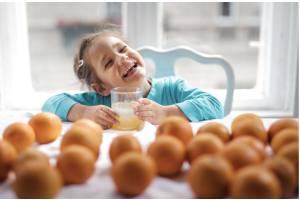Toddler Daycare Checklist: How To Find the Best Fit for Your Child

Choosing a daycare for your toddler can feel like one of the biggest decisions you’ll make in early parenthood. You’re not just picking a place for your child to spend the day. You’re also choosing the environment where they’ll learn, grow, and take those early steps toward independence. A good toddler daycare supports their curiosity, nurtures their social development, and helps them build essential skills in a safe, loving setting.
Here’s a checklist to help you find a daycare that truly feels like a second home for your child. It should meet both your standards and your little one’s unique needs.
Visit and Observe the Environment
Schedule a tour of each center you’re considering. Observe how the staff interacts with children and how the kids respond to them. Are they smiling, relaxed, and engaged? Do caregivers get down to the child’s level to talk or play with them? These subtle details reveal a great deal about the atmosphere and the center’s philosophy on care.
The best toddler care environments strike a balance between safety and stimulation. Look for clean, organized spaces with child-sized furniture, safe play areas, and plenty of natural light. A strong child care program also includes areas for sensory play and outdoor space that allows children to explore freely while improving their gross motor skills.
Many high-quality centers, such as Warooga Child Care, offer thoughtfully designed environments that encourage curiosity and learning through hands-on play while still prioritizing safety and comfort.
Review the Learning Approach and Curriculum
A quality child care program encourages purposeful play that supports development across different areas. Ask about the center’s learning curriculum and how it’s tailored to toddlers’ developmental milestones.
The best early education programs often use play-based methods that support language, cognitive development, and problem-solving skills. Look for activities that build both fine and gross motor skills, such as art projects, stacking blocks, and outdoor play. Music and movement activities are also great for coordination and rhythm, while storytime and pretend play help strengthen verbal language skills.
Inquire about how the center incorporates social and emotional learning. Toddlers are still learning to manage emotions, share, and take turns. The way teachers guide them through those moments can shape how they interact with others later on. A strong toddler program should prioritize positive guidance and gentle redirection over strict discipline.
Check Teacher Qualifications and Ratios
The people caring for your toddler have an enormous impact on their early experiences. Ask about teacher qualifications and training. Are caregivers certified in early childhood education? Do they receive ongoing professional development to stay current with best practices in child care?
Pay attention to the teacher-to-child ratio as well. Lower ratios allow for more individual attention, which is especially important in a toddler classroom where children need reassurance and close supervision. Ideally, teachers should have enough time to interact meaningfully with each child.
You can also ask about teacher and child relationships. Strong, consistent relationships help toddlers feel secure and confident to explore. Responsive teachers who notice small cues, such as a tired child needing comfort or an eager one ready to try something new, make all the difference in daily classroom experiences.
Understand Daily Routines and Communication Practices
Toddlers thrive when their days follow a familiar rhythm. Consistent feeding, nap times, and potty training schedules help them feel secure and confident. When visiting a daycare, pay attention to how routines are organized and how caregivers guide transitions between activities. A calm, predictable flow can make a world of difference for children still learning to manage change.
Many centers also keep parents informed throughout the day. Some share quick updates about meals, naps, and playtime through a family communication app or short written notes. This ongoing connection gives you a glimpse into your child’s daily experiences and helps you stay involved in their growth.
Prioritize Safety, Health, and Nutrition
A dependable daycare maintains high standards of safety and cleanliness at all times. Notice how the classrooms are arranged: sharp corners are covered, small objects are kept out of reach, and spaces are well-ventilated. Staff should be trained in first aid and CPR, ready to handle any situation calmly and confidently.
Good nutrition also plays a major role in your child’s overall well-being. Balanced meals and snacks provide the energy toddlers need for active learning and play. When reviewing meal plans, ensure they include fresh ingredients, appropriate portions, and options that accommodate dietary needs or allergies.
Don’t forget about physical activity. Access to a secure outdoor space provides children with the opportunity to run, climb, and develop their gross motor skills. Soft play surfaces, shaded areas, and age-appropriate equipment make outdoor experiences both fun and safe.
Encourage Family Connection
The best child care programs build strong relationships not only with children but also with their families. Genuine parent involvement in your child’s early learning makes a meaningful difference in how they grow and adapt. You should feel included in your child’s journey, supported by teachers who value your input and keep you informed about developmental progress.
Many centers organize family engagement activities or informal classroom visits where parents can join in for a story, art project, or special event. These small moments foster a sense of community, allowing you to observe how your child interacts and learns with others.
The Bottom Line
Finding the right daycare takes time, but it’s worth every bit of effort. The best toddler care centers offer not just supervision but also create a foundation for lifelong learning and growth. And once you find a nurturing, safe, and stimulating place that feels right, you’ll know your toddler is exactly where they’re meant to be.






